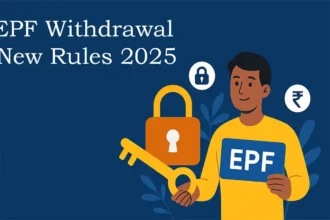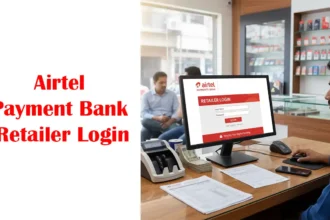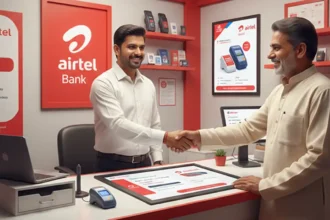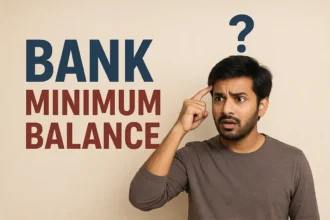Direct Benefit Transfer (DBT) Aadhar Seeding by NPCI
In India, the government has introduced many programs to help people in need. One of the most important programs is called Direct Benefit Transfer, or DBT. This program is designed to make sure that money and other benefits from the government reach the people who need them directly, without any middlemen or delays. DBT is a system that helps to reduce corruption and ensure that the right people get the right benefits at the right time.
In this post, we will explore what Direct Benefit Transfer (DBT) is, how it works, and why it is important for the people of India. We will also look at the different types of benefits that are transferred through DBT and how this system has made a positive impact on the lives of many Indians.
What is Direct Benefit Transfer (DBT)?
Direct Benefit Transfer, or DBT, is a system used by the Government of India to send money and other benefits directly to the bank accounts of people who are eligible for them. The main idea behind DBT is to remove any middlemen or intermediaries who might take a part of the money or delay the process of delivering the benefits. By using DBT, the government ensures that the full amount of money or benefit reaches the person who deserves it.
Before DBT was introduced, there were many cases where the benefits provided by the government did not reach the people who needed them the most. Sometimes, middlemen would take part of the money, and other times, the benefits would be delayed or lost. With DBT, the government has been able to reduce these problems and make the process more efficient and transparent.
How Does DBT Work?
DBT works by directly transferring money or benefits to the bank accounts of the beneficiaries. To do this, the government uses a digital platform where the details of the beneficiaries are stored. These details include the person’s name, bank account number, and other important information. The government also uses the Aadhaar number, which is a unique identification number given to every Indian citizen, to make sure that the benefits are going to the right person.
When the government decides to give a benefit to someone, it checks the person’s details in the DBT system. If the person is eligible for the benefit, the government transfers the money or benefit directly to their bank account. This process is very fast and secure, and it ensures that the right person gets the right benefit at the right time.
Types of Benefits Transferred Through DBT
Many different types of benefits are transferred through DBT. Some of the most common benefits include:
- Subsidies: Subsidies are financial help given by the government to reduce the cost of certain goods or services. For example, the government provides subsidies on cooking gas (LPG), fertilizers, and food grains. Through DBT, the subsidy amount is directly transferred to the bank accounts of the beneficiaries.
- Scholarships: The government provides scholarships to students from economically weaker sections to help them continue their education. These scholarships are now transferred directly to the student’s bank accounts through DBT.
- Pensions: The government provides pensions to senior citizens, widows, and disabled people. These pension amounts are transferred directly to their bank accounts through DBT.
- Wages: In some government schemes like the Mahatma Gandhi National Rural Employment Guarantee Act (MGNREGA), people are provided work and are paid wages. These wages are now transferred directly to the bank accounts of the workers through DBT.
- Financial Assistance: The government also provides financial assistance to farmers, pregnant women, and other vulnerable groups. This financial assistance is transferred directly to their bank accounts through DBT.
The Role of Aadhaar in DBT
Aadhaar plays a very important role in the DBT system. Aadhaar is a unique identification number that is given to every Indian citizen. This number is linked to the person’s bank account and other important details. When the government wants to transfer a benefit to someone, it uses the Aadhaar number to make sure that the money or benefit is going to the right person.
By using Aadhaar, the government can avoid fraud and ensure that only eligible people receive the benefits. Aadhaar also helps to make the process faster and more efficient because all the necessary details are already linked to the Aadhaar number.
Benefits of DBT
There are many benefits of the DBT system. Some of the most important benefits include:
- Reduction in Corruption: Before DBT was introduced, there were many cases of corruption where middlemen or intermediaries would take a part of the money or delay the process of delivering the benefits. With DBT, the money or benefits are transferred directly to the bank accounts of the beneficiaries, which reduces the chances of corruption.
- Efficiency: DBT has made the process of delivering benefits much faster and more efficient. Since the money is transferred directly to the bank accounts of the beneficiaries, there is no need for any paperwork or delays.
- Transparency: DBT has increased transparency in the process of delivering benefits. The government can easily track the money or benefits and make sure that they are reaching the right people.
- Targeting the Right Beneficiaries: With the help of Aadhaar, the government can make sure that only eligible people are receiving the benefits. This helps to target the right beneficiaries and avoid any misuse of the system.
- Convenience: DBT has made it more convenient for the beneficiaries to receive their benefits. They do not have to go to any government office or wait in long lines to receive their benefits. The money is directly transferred to their bank accounts, which they can access at any time.
How to check Bank Account is a DBT Account?
If you want to check if your Bank Account Aadhar is linked by NPCI or not and if your account is a Direct Benefit Transfer Account you have to follow the below steps.
- Go to the UIDAI(Aadhar) official website
- Then you have to click on MY Aadhar which is located on Top Menu.
- After that click on MY Aadhar >Aadhar Services> Check Aadhar/Bank Linking Status.
- Then you have to enter your Aadhar number, and captcha code and Click Send OTP.
- Then an OTP will receive on your registered mobile number.
- After Submitting the OTP a new page will appear in front of you.
- Here you will be able to check which bank is linked with NPCI in your Aadhaar.
What Documents are required for Direct Benefit Transfer (DBT) Account?
- Aadhar card
- Mobile number
- Bank Account
- Consent form(For Offline)
How To Seeding Aadhaar with Bank Account for DBT Online?
- Go to Online Banking as your Bank Name
- Find the option of OTP Based on Aadhaar Seeding
- Then will ask you for your Account Number and Aadhar Number
- After an OTP verification, you can Seeding Aadhaar with Bank Account by NPCI
How to Seeding Aadhaar with Bank Account Offline?
To Seeding Aadhaar with a bank account by NPCI, first, you have to go to the nearest bank branch.
- Then you collect Consent Form to Bank for Aadhaar Seeding.
- Fill in all the information carefully which is asked in this form.
- Then you have to attach all the required documents along with the form.
- After this, the form has to be submitted to your branch.
- After this, your Bank Account will be linked to your Aadhaar.
Check Direct Benefit Transfer PPT – Here
How to change your DBT Bank Account?
To change the existing bank account for receiving DBT funds or do Aadhaar Seeding with Bank Account, you have to visit the respective bank branch and submit the mandate form and consent form provided by your bank along with a copy of your Aadhaar. After a few days, your DBT Bank Account will be changed.
Challenges Faced by DBT
While DBT has many benefits, there are also some challenges that need to be addressed. Some of the challenges faced by the DBT system include:
- Access to Bank Accounts: Not everyone in India has a bank account. This can be a challenge for the DBT system because the benefits are transferred directly to bank accounts. To address this challenge, the government has started programs like the Pradhan Mantri Jan Dhan Yojana (PMJDY) to help people open bank accounts.
- Connectivity Issues: In some rural areas, there are issues with internet connectivity. This can make it difficult for people to access their bank accounts and receive their benefits through DBT.
- Technical Glitches: Sometimes, there are technical issues in the DBT system that can cause delays in the transfer of benefits. These issues need to be addressed to make sure that the system works smoothly.
- Awareness: Some people, especially in rural areas, are not aware of the DBT system and how it works. The government needs to create more awareness about DBT so that everyone can benefit from it.
Success Stories of DBT
Despite the challenges, there have been many success stories of DBT in India. One of the most successful examples of DBT is the transfer of LPG subsidies. Before DBT was introduced, there were many cases of people not receiving their subsidies or receiving them late. With the introduction of DBT, the subsidy amount is now directly transferred to the bank accounts of the beneficiaries. This has made the process much faster and more efficient.
Another success story is the transfer of scholarships to students. Before DBT, many students did not receive their scholarships on time, which made it difficult for them to continue their education. With DBT, the scholarship amount is now directly transferred to the students’ bank accounts, which helps them to pay for their education expenses on time.
The Future of DBT
The DBT system has already made a big impact on the lives of many people in India, but there is still room for improvement. In the future, the government plans to expand the DBT system to include more benefits and cover more people. The government is also working on addressing the challenges faced by the DBT system, such as access to bank accounts and connectivity issues.
The government is also exploring new technologies, such as blockchain, to make the DBT system even more secure and efficient. With these improvements, the DBT system has the potential to become even more effective in delivering benefits to the people who need them the most.
Conclusion
Direct Benefit Transfer (DBT) is a powerful system that has helped to make the process of delivering government benefits more efficient, transparent, and fair. By directly transferring money and benefits to the bank accounts of the beneficiaries, DBT has reduced corruption, increased efficiency, and made it easier for people to receive their benefits.
While there are still some challenges that need to be addressed, the success stories of DBT show that it has already made a big impact on the lives of many people in India. As the government continues to improve and expand the DBT system, it has the potential to become an even more important tool in helping the people of India.
In conclusion, DBT is a step in the right direction for the government and the people of India. It is a system that ensures that the right people get the right benefits at the right time, and it has the potential to make a positive difference in the lives of millions of people across the country.
FAQs
What is DBT?
Direct Benefit Transfer (DBT) is the name of the government program that aims to transfer money directly to the bank accounts of beneficiaries from various government schemes.
How to check if My Bank Account is a DBT Account?
Go to the UIDAI(Aadhar) official website. MY Aadhar >Aadhar Services> Check Aadhar/Bank Linking Status. Enter your Aadhar number and Aadhaar OTP Verification you will check that.
What is Aadhaar Seeding?
Aadhaar Seeding is a process to Link your 12 Digit Aadhar Number with Scholarships, Pension ID, Life Certificate, Bank Account, MNREGA Job Card, and any other Personal Identification Documents for getting Benefits.




